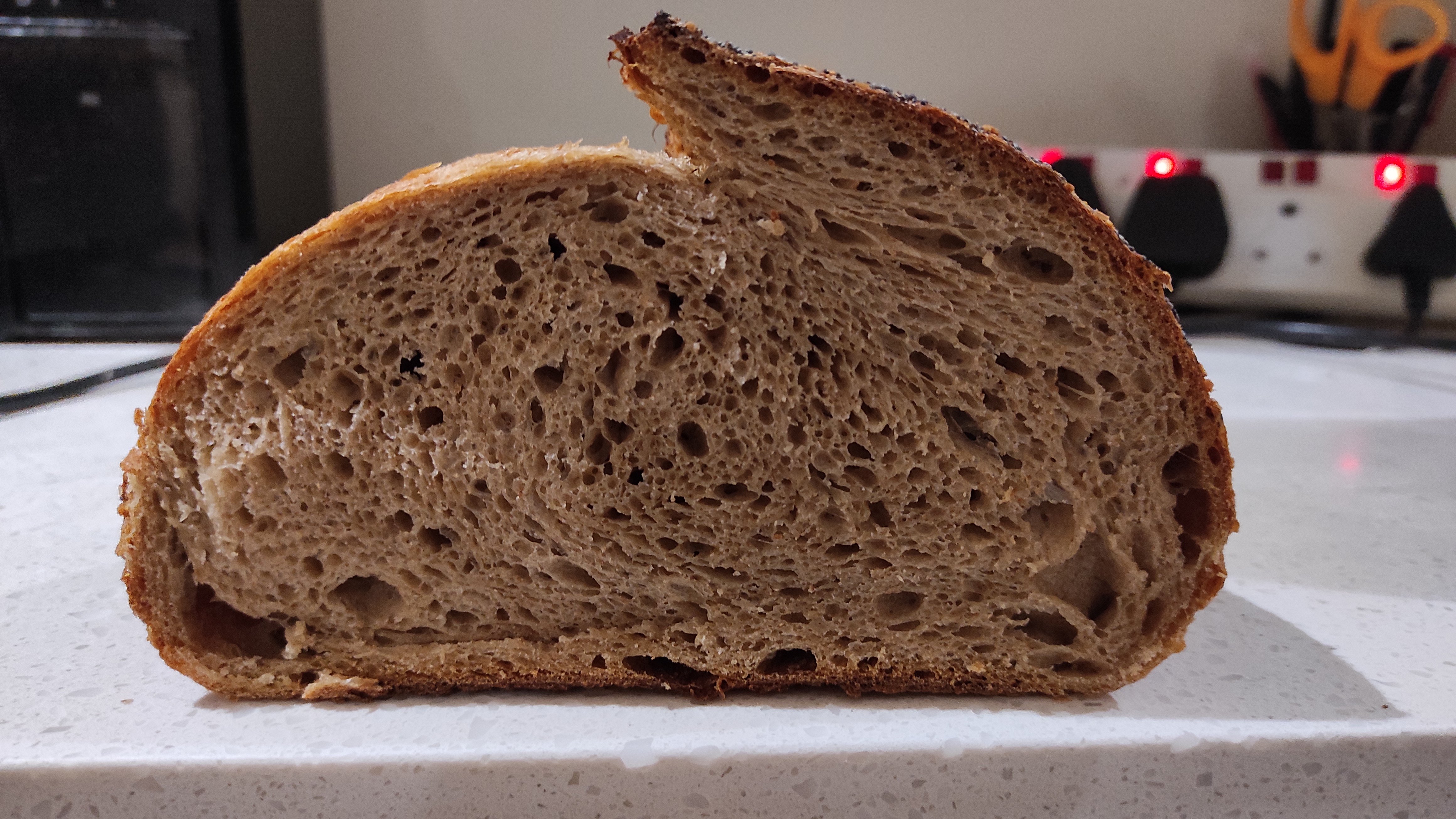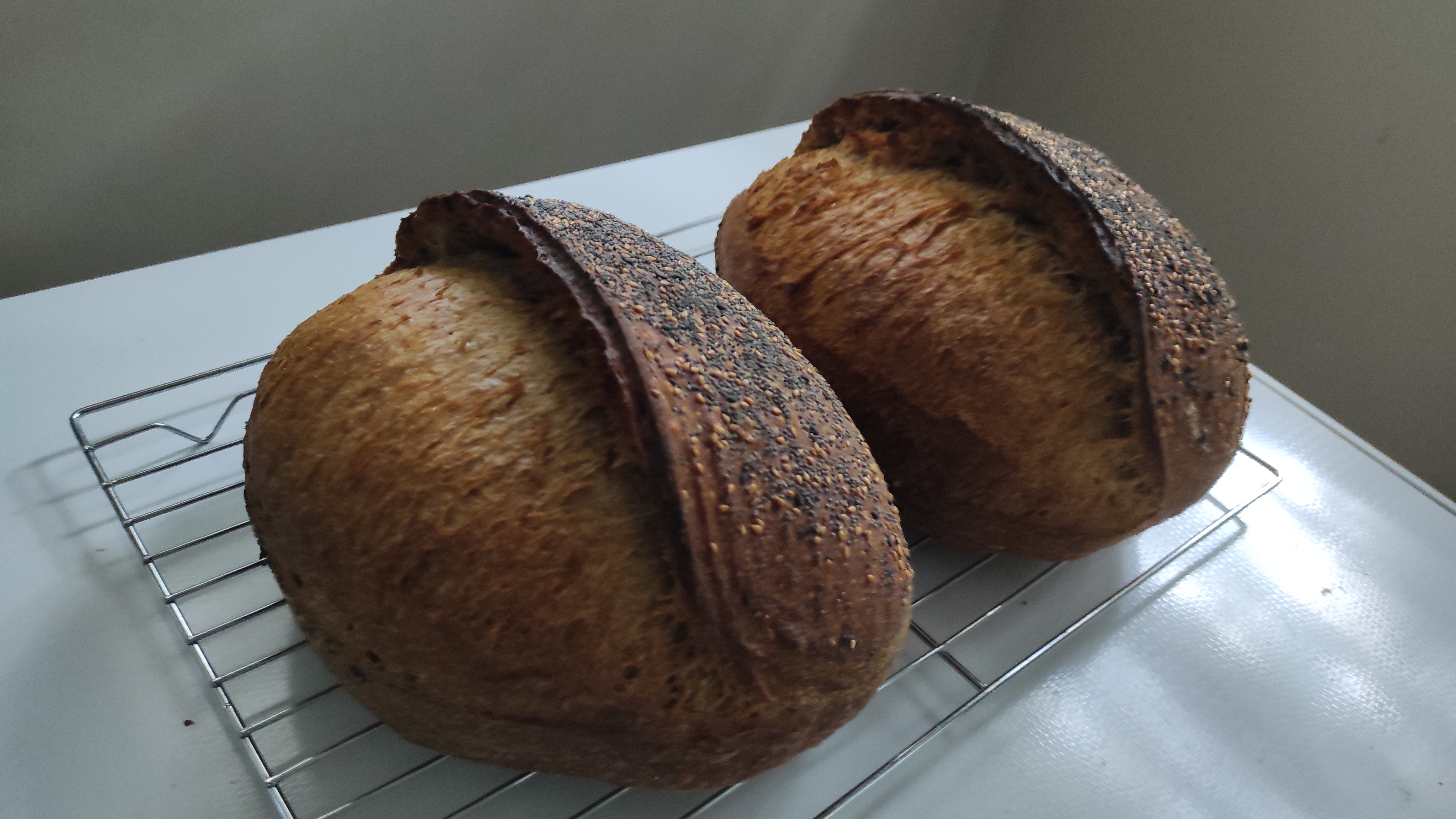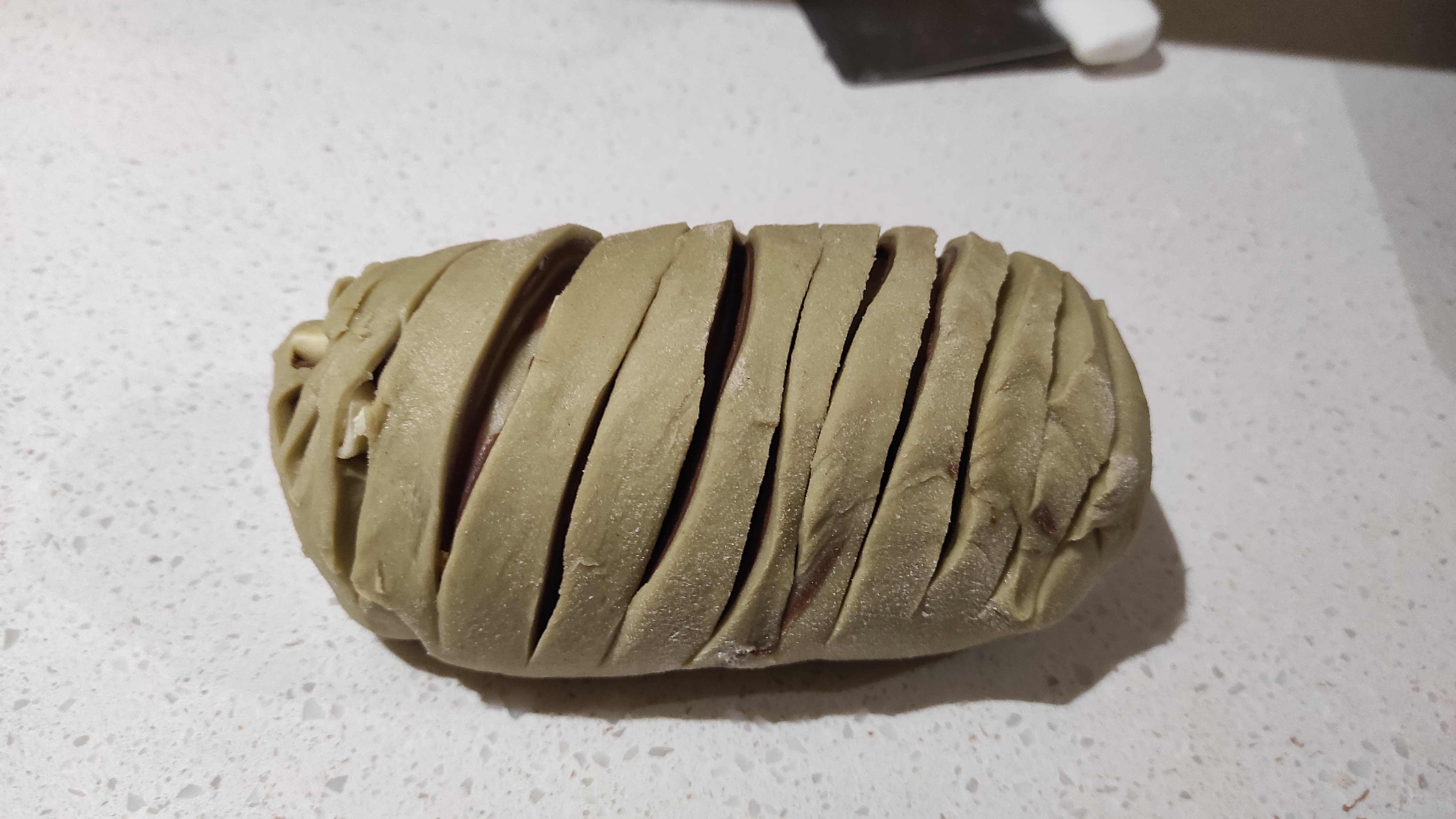A lot of us are experimenting with different ways of baking - driven by high energy prices or issues with a constant supply of electricity, as we have in South Africa.
So, I took a bread in banneton along to a family member who has recently purchased a Kenwood 25l "air fryer oven" which can operate as a convection oven as well, and uses only 1.7kW of electricity, so is more feasible to be powered by solar panels during the day.
The benefit to this little oven is that it claims to reach the 230°C after only 6 minutes - which is far faster than my oven which I give an hour! This is probably where the greatest electricity savings could be realized.
Still learning how to bake with this one - we did 30 minutes in a covered casserole on the bake setting at 230°C (446°F) - followed by another 20 minutes reduced to 200°C (392°F) uncovered. Even after 50 minutes the bread was still pale so we used the air-fryer setting to brown it for a further 10 minutes.
The resultant bread was lovely, the sesame smell really carried through the house that I don't normally get with a normal bake!

This was a lovely bread, even if the shape wasn't as good as it could be - didn't get an ear as it was still fairly slumpy on the bake setting - and the top had a darker strip in the middle, but I think with experience and using the air-fryer setting from the beginning it could be possible to consistently get a great loaf with less electricity usage.









Gorgeous. Was the whole wheat noticeable in the final product?